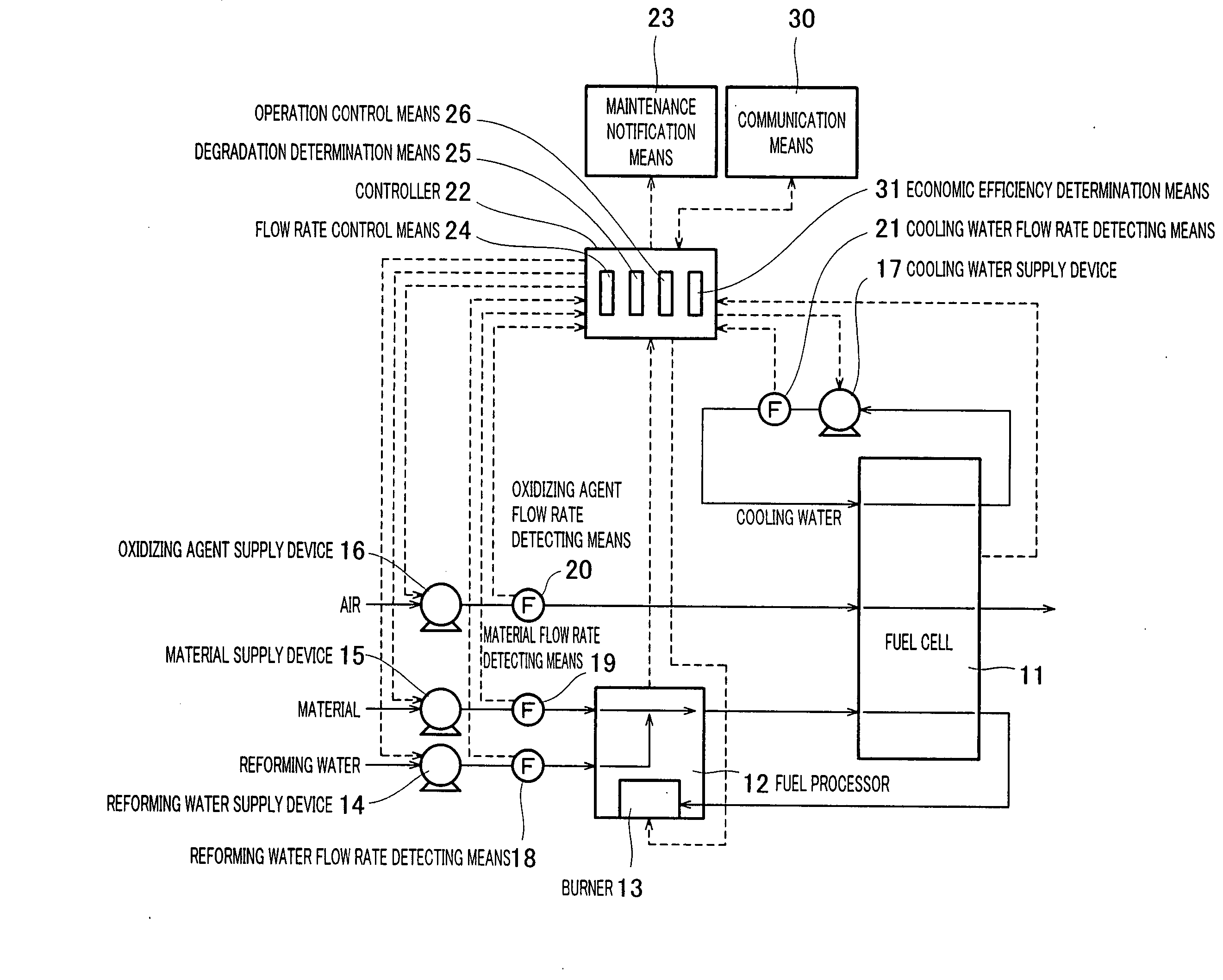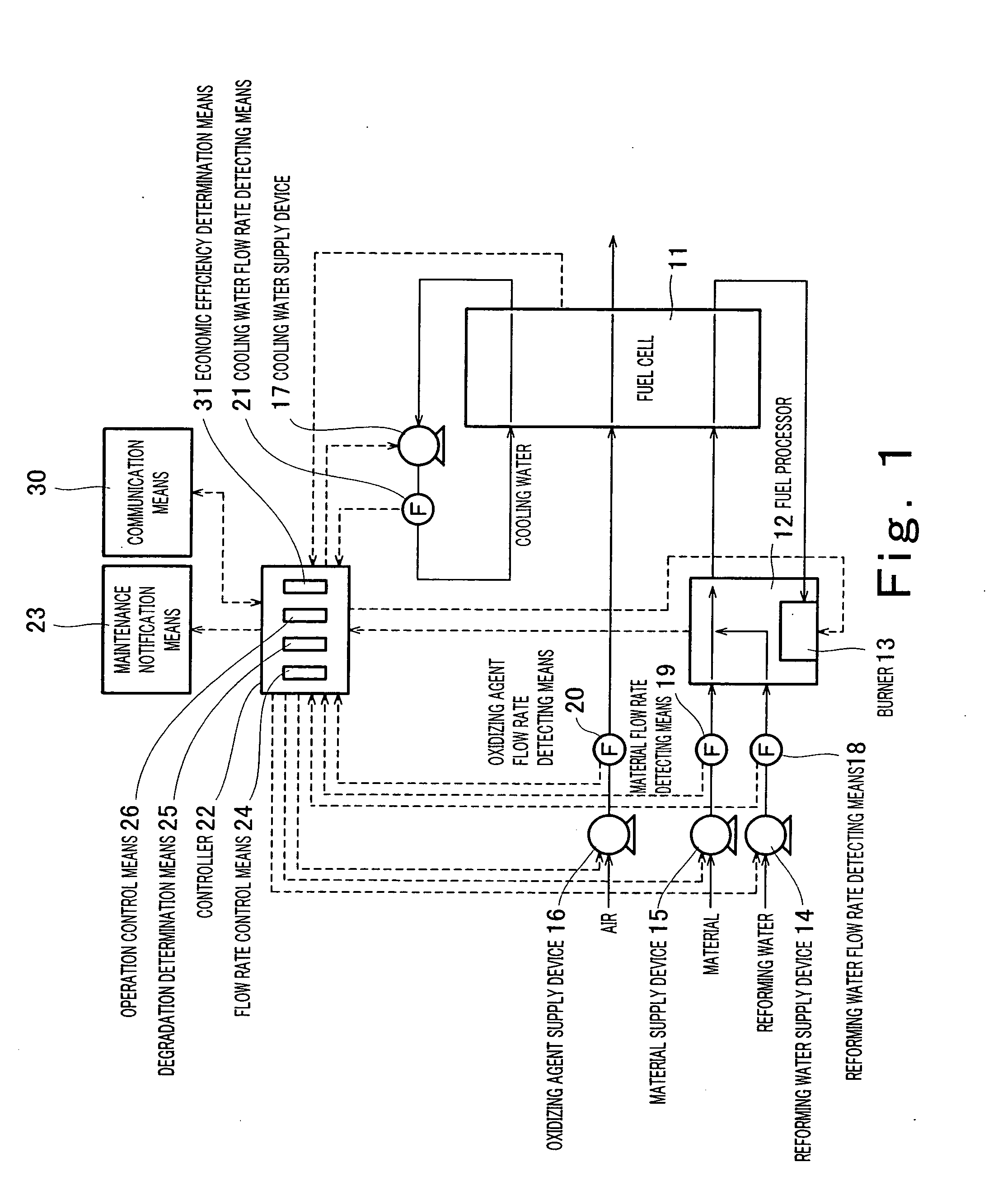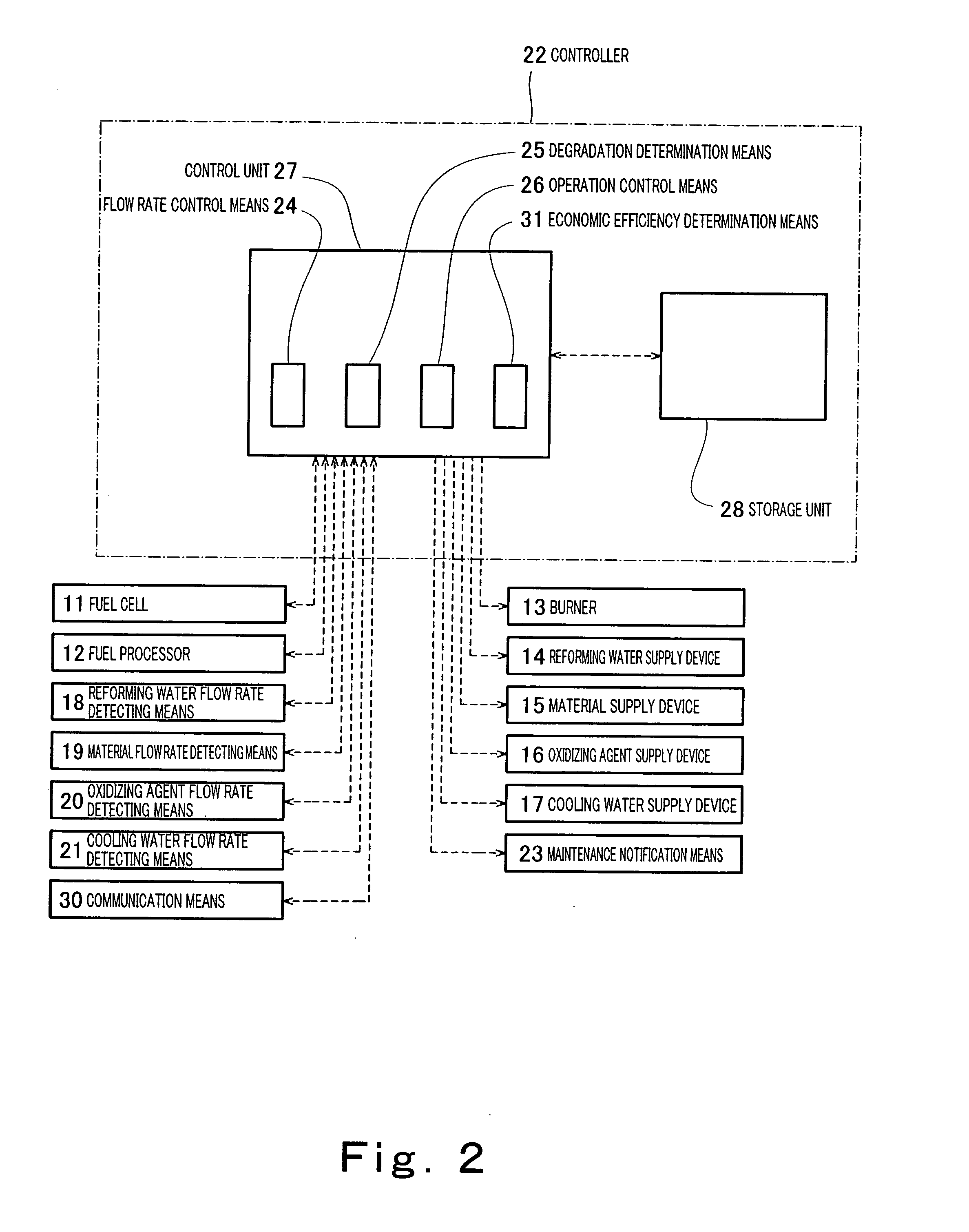Fuel Cell Power Generation System
- Summary
- Abstract
- Description
- Claims
- Application Information
AI Technical Summary
Benefits of technology
Problems solved by technology
Method used
Image
Examples
embodiment 1
[0071]FIG. 1 is a block diagram schematically showing a construction of a fuel cell power generation system according to a first embodiment of the present invention. Hereinbelow, hardware and a control system in the fuel cell power generation system of this embodiment will be respectively described with reference to FIG. 1.
[0072] First, the hardware will be described. As shown in FIG. 1, the hardware of this embodiment includes a fuel cell 11 that generates electric power through an electrochemical reaction using a fuel and an oxidizing agent such as air which are supplied, a fuel processor 12 that generates a gas containing hydrogen through a reforming reaction occurring between a supplied material such as a natural gas and steam generated by heating supplied reforming water and to supply the gas to the fuel cell 11 as a fuel, a burner 13 that combusts the fuel (hereinafter referred to as an off gas) that is unconsumed and exhausted from the fuel cell 11 to heat the fuel processor...
embodiment 2
[0121] In the first embodiment, it is determined whether or not the first degradation and second degradation have occurred in the objects subjected to degradation determination with reference to the table without executing control for achieving a maximum flow rate as a target value. In contrast, in the second embodiment, the degradation determination means 25 determines that the first degradation and the second degradation have occurred in the objects subjected to degradation determination if a required flow rate according to a control target value of the power output is unachievable although the control is actually attempted to achieve the required flow rate.
[0122]FIG. 11 is a block diagram schematically showing a construction of a fuel cell power generation system according to this embodiment. FIG. 12 is a block diagram schematically showing a configuration of a controller in the fuel cell power generation system according to this embodiment. Below, this embodiment will be descri...
embodiment 3
[0150] In the second embodiment of the present invention, the degradation determination means 25 determines that the first degradation and the second degradation have occurred in the objects subjected to degradation determination if the required flow rate according to the control target value of the power output is unachievable in a case where the control is actually executed to achieve the required flow rate. In contrast, in a third embodiment of the present invention, the output command value and the detection value of the fluid are stored, the flow rate in the case where the output command value is set to the upper limit is predicted using the stored result, and the degradation determination means 25 determines whether or not the first degradation and the second degradation have occurred in the objects subjected to degradation determination based on the predicted result. In the third embodiment, in addition, in a case where it is determined that first degradation has occurred in ...
PUM
 Login to View More
Login to View More Abstract
Description
Claims
Application Information
 Login to View More
Login to View More - R&D
- Intellectual Property
- Life Sciences
- Materials
- Tech Scout
- Unparalleled Data Quality
- Higher Quality Content
- 60% Fewer Hallucinations
Browse by: Latest US Patents, China's latest patents, Technical Efficacy Thesaurus, Application Domain, Technology Topic, Popular Technical Reports.
© 2025 PatSnap. All rights reserved.Legal|Privacy policy|Modern Slavery Act Transparency Statement|Sitemap|About US| Contact US: help@patsnap.com



